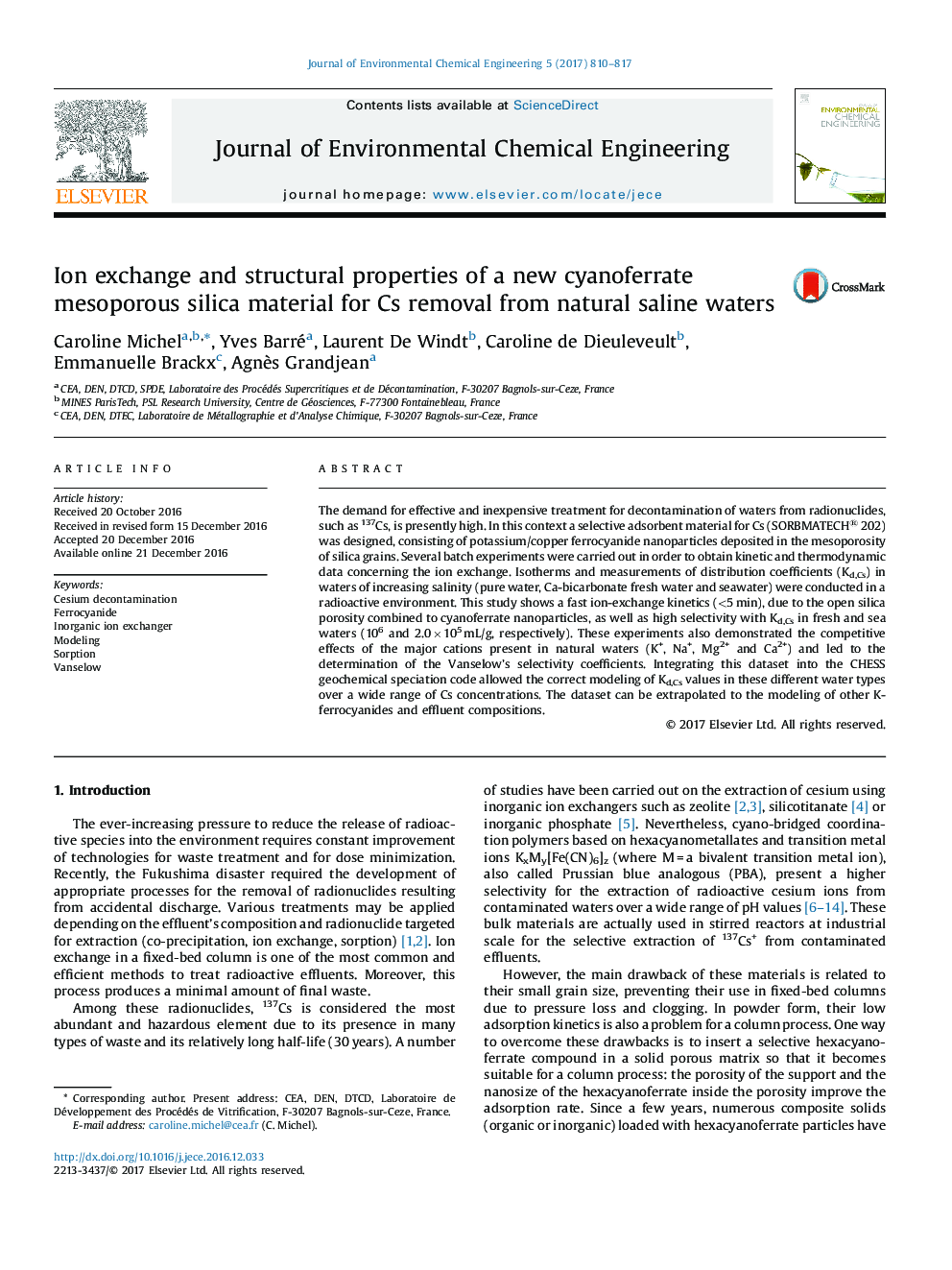| Article ID | Journal | Published Year | Pages | File Type |
|---|---|---|---|---|
| 6477504 | Journal of Environmental Chemical Engineering | 2017 | 8 Pages |
â¢A new inorganic adsorbent of Cs is synthetized for water decontamination.â¢Sorption kinetics is fast due to open silica porosity and cyanoferrate nanoparticles.â¢Cs concentration ranges from trace (10â12 M) to high (10â3 M) values.â¢Highly selective Kd of Cs are obtained in both pure, fresh and sea waters.â¢Ion exchange constants and mechanism are studied and modeled in all water types.
The demand for effective and inexpensive treatment for decontamination of waters from radionuclides, such as 137Cs, is presently high. In this context a selective adsorbent material for Cs (SORBMATECH® 202) was designed, consisting of potassium/copper ferrocyanide nanoparticles deposited in the mesoporosity of silica grains. Several batch experiments were carried out in order to obtain kinetic and thermodynamic data concerning the ion exchange. Isotherms and measurements of distribution coefficients (Kd,Cs) in waters of increasing salinity (pure water, Ca-bicarbonate fresh water and seawater) were conducted in a radioactive environment. This study shows a fast ion-exchange kinetics (<5Â min), due to the open silica porosity combined to cyanoferrate nanoparticles, as well as high selectivity with Kd,Cs in fresh and sea waters (106 and 2.0Â ÃÂ 105Â mL/g, respectively). These experiments also demonstrated the competitive effects of the major cations present in natural waters (K+, Na+, Mg2+ and Ca2+) and led to the determination of the Vanselow's selectivity coefficients. Integrating this dataset into the CHESS geochemical speciation code allowed the correct modeling of Kd,Cs values in these different water types over a wide range of Cs concentrations. The dataset can be extrapolated to the modeling of other K-ferrocyanides and effluent compositions.
Graphical abstractDownload high-res image (101KB)Download full-size image
